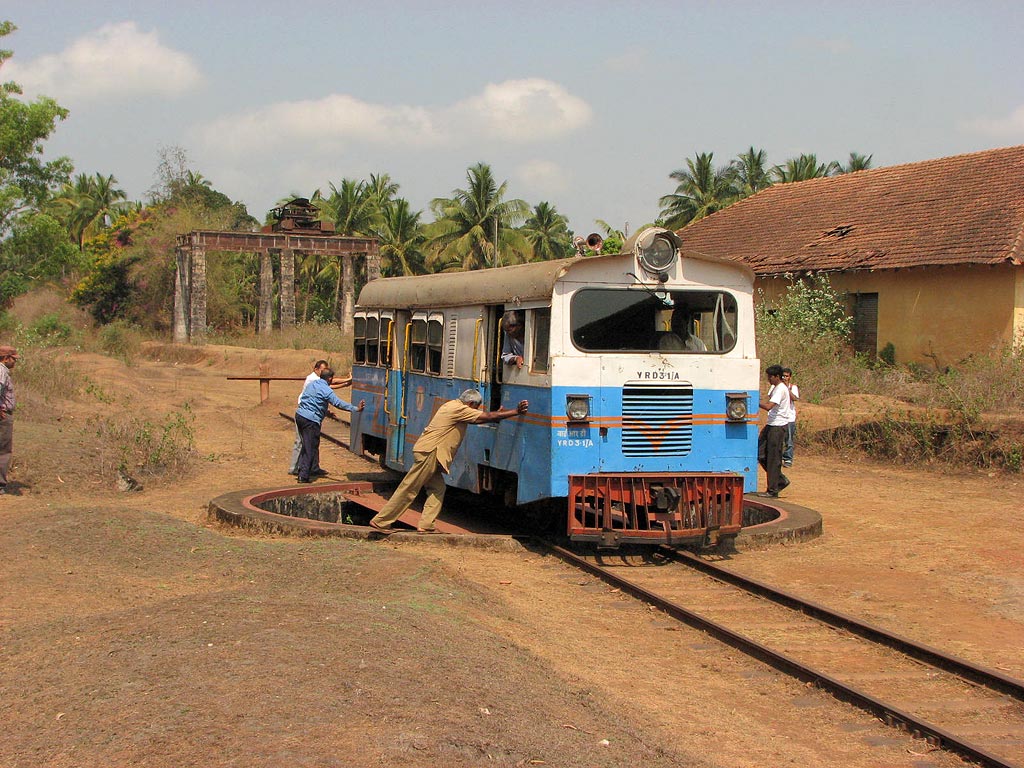On one unusually damp summer morning in 2007, we found ourselves bleary eyed and dazed on Shimoga Town’s narrow platform number one. The overnight passenger from Bangalore had arrived earlier than usual. A coffee vendor was found and two, strong, invigorating cups later, a sense of purpose as to why we here started dawning.
We soon spot our quarry. Across on the far side of the station, stood the decrepit looking trailer railbus, the only one left of its kind in Southern India. Soon it would begin its plodding journey to Talaguppa, at the base of the Western Ghats, on the metre gauge branch line that was finally commissioned in 1940, twenty years after its construction began. Built by the Maharaja of Mysore for the Southern Mahratta Railway Company, it was later operated by his own concern, the Mysore State Railway.
Until the 1990s, it was operated by steam locomotives, but when they began to be phased out, a railbus was chosen as the replacement. Given the lowly status of the line, this railbus was built by the local workshop: An Ashok-Leyland engine and drive train, using a 5-speed gear box mated to a frame borrowed from a four-wheeler tank wagon, with a hand built body. As expected, the workmanship was quite poor and the railbus saw frequent failures.

But on the day we were there, it was all glistening in the damp dew that covered everything, ready to sputter to life. And when it did, an unexpectedly large contingent of passengers boarded. The driver raised his eyebrows quite a few times.

Soon, we were on our way, crossing the edge of the town, scattered paddy fields and into thick, misty woodland.
The track condition was quite poor and we’d stop every so often to inspect the suspension and frame in dense fog.

At Kenchanalu, the unofficial tea and breakfast halt. Everyone got down and trooped over to a small hut run by an old lady. On the menu: soft thatte idlis, served with a fiery coconut chutney, washed down with cardamom infused tea.
The only big town on the entire route is Sagar (officially named Sagar Jambaguru). So we halted there for an extended period of time.



The station clearly had seen better times, but the art-deco style building was stunning nevertheless, with delicate wrought iron works on the roof.

Most of the bus emptied itself out, but there were a few new passengers, along with their assortment of luggage heading towards Talaguppa.
At Talaguppa, there was an elaborate procedure to turn the bus around for its return journey.

First, the driving cab and trailer were split, the points changed and the driving cab moved into the siding. The points were then switched back and the trailer pushed manually on the main line and cleared away from the point.
On the siding, the driving cab was pushed onto the turn-table. The turn-table was not ratcheted, so it would move freely with very little friction.

With the driving cab reoriented in the correct direction, time to power it back on.

The cab was then driven forward and the backed up into the siding to get the trailer attached.

The bus was now ready for its journey back to Shimoga in the evening.
We bid goodbye to the genial station master and headed out to find a bus (one that uses a road!) back to Bangalore.
This line is now fully converted to broad gauge and has several expresses and passengers now running, which the local populace greatly appreciates. But those of us steeped in nostalgia and memories miss the metre gauge line, the rickety rail bus and the beautiful old station buildings.






